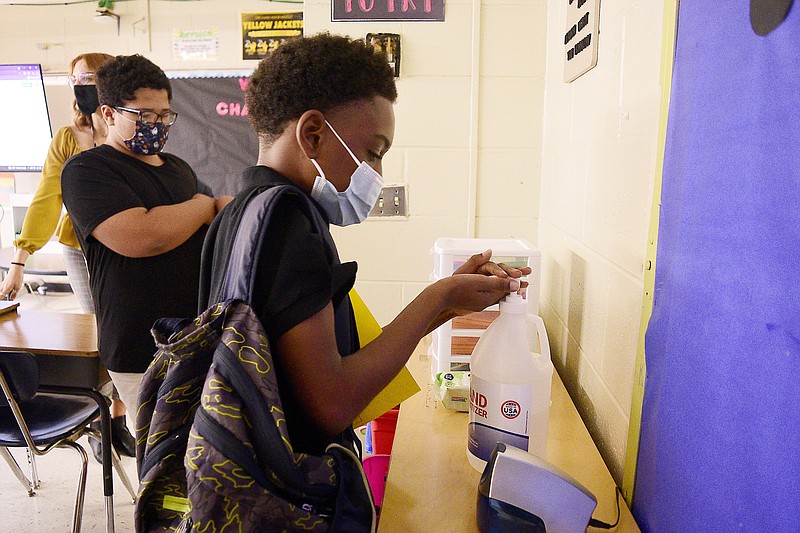A think tank in Nashville is questioning how school districts across the state are spending some of their COVID-19 relief dollars and whether the funds are being used for their intended purpose: to mitigate learning loss caused by the pandemic.
The report, compiled by the Beacon Center of Tennessee, is based on an open records request to the Tennesee Department of Education for detailed spending forms for 12 districts related to their spending of pandemic relief funds, known as Elementary and Secondary School Emergency Relief. Typically these forms and the level of detail they provide are not readily available to the public.
"The data suggests that Tennessee public school districts have budgeted or spent relief dollars on areas that had nothing to do with COVID or student performance," the report states. "Millions budgeted for 'indirect costs,' travel to conferences for staff, new buildings and retractable bleachers are just a few of the budget items to come from how Tennessee school districts are using ESSER funds."
(READ MORE: Hamilton County school board approves $456 million budget, 3% raise for teachers)
Of the $4 billion in federal dollars sent to Tennessee school districts, the Beacon Center found that districts budgeted $1.23 billion for capital outlay; $881.4 million for salaries; $492.6 million for contracting services, $400.7 million for supplies and materials, $224.3 million for benefits, $213.4 million for other charges and $24.4 million for per diems and fees.
The report highlights some of the big ticket items from the four largest districts in the state, which includes Hamilton County. The other three are Davidson County, Shelby County and Knox County.
Hamilton County Schools received more than $142 million in relief funds and, according to district officials, more than 45% of those funds -- more than $60.7 million -- has been dedicated to addressing learning loss and student learning acceleration.
The Beacon Center's report is particularly critical of two spending allocations by Hamilton County Schools: $25 million dollars for a new school and an investment of roughly $200,000 for a school cafeteria project.
(READ MORE: What Tennessee's new education funding formula means for Hamilton County Schools)
"Hamilton County Schools has budgeted $25 million for a new building, reasoning that it will allow for 'appropriate social distancing,'" the report stated. "HCS also budgeted nearly $200,000 to remodel a cafeteria for 'appropriate social distancing.' New buildings and renovations can be legitimate school expenditures, but when dollars were intended to combat the pandemic and learning loss, students and academics should be the priority, not new buildings."
The cafeteria project does not belong to Hamilton County Schools, but to Ivy Academy, a charter school, Steve Doremus, district spokesperson, said in an email. Doremus also said the $25 million expenditure is dedicated to the construction of the new Tyner Middle/High School.
"The construction of a new Tyner Middle/High School was widely supported by the Hamilton County community to address a longtime need," Doremus said. "The positive impact of this expenditure will be felt in the community for decades to come as students are provided with a facility designed to accommodate student growth and learning in the 21st Century."
Other expenses by Hamilton County Schools included in the Beacon Report are as follows:
-- $120,000: Kindergarten screening software.
-- $249,000: Application developer.
-- $528,000: Teacher stipends for professional learning.
-- $2.2 million: Retention bonuses.
-- $5 million: Renovations to existing building.
-- $515,000: COVID case managers.
-- $8.2 million: Indirect costs.
"Hamilton County has made thoughtful and impactful decisions in its use of ESSER funds to support the education of Hamilton County children," Doremus said.
Hamilton County's complete ESSER reporting forms can be accessed at bit.ly/ESSER-HCS.
Contact Carmen Nesbitt at cnesbitt@timesfreepress.com or 423-757-6327. Follow her on Twitter @carmen_nesbitt.
